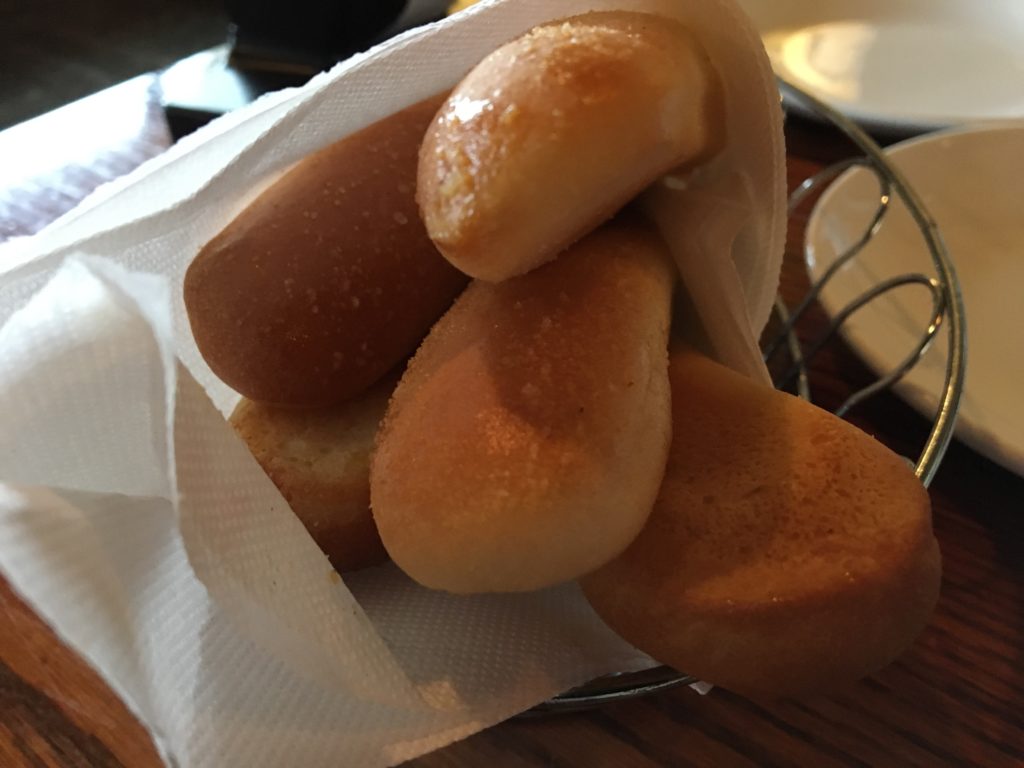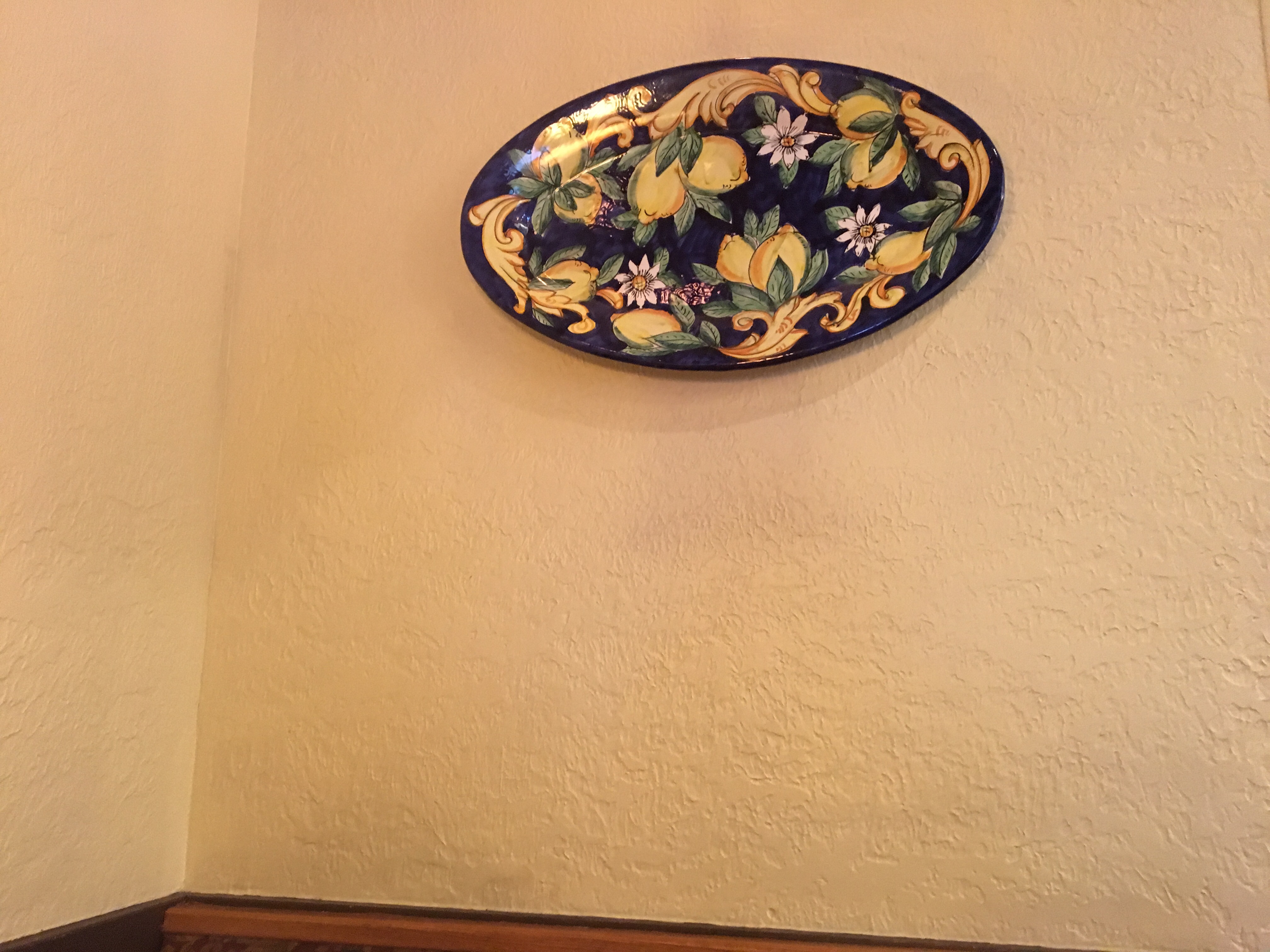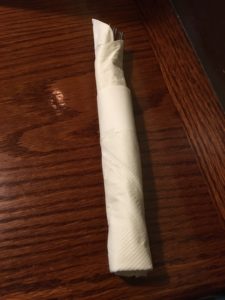
Glass half empty kind of day: Yankees looking terrible. Too much work to do…
People.
1: linguini + artichoke Alfredo + shrimp
2: same + same + chicken (breaded for comfort)
Breadsticks: 1/2 full
Weight: 1/2 of 2 mes
Ideas: no thanks

Glass half empty kind of day: Yankees looking terrible. Too much work to do…
People.
1: linguini + artichoke Alfredo + shrimp
2: same + same + chicken (breaded for comfort)
Breadsticks: 1/2 full
Weight: 1/2 of 2 mes
Ideas: no thanks

Five breadsticks — five branches: legs, arms, head.
Fragile bodies.
1: linguini
Artichoke Alfredo
Chicken
2: linguini
Chicken
Breadsticks: 3
Weight: feathers
Time: now

How democratic is art? John Berger wrote an interesting volume on that idea, Ways of Seeing, and I highly recommend it. It’s a short read, and there are a lot of pictures to look at, and nowadays those are some of my chief criteria for a book worth reading. He maintains in his book that art is always political and economic.
Berger wants to go all the way with his theory and I’m not sure I’m quite ready for that. He basically lays bare the purpose of art: it’s to store and display wealth. This is clear if you look at the market for artworks; if something is auctioned off for a ridiculous price, it’s not because the new owner expects to find some kind of overwhelming sense of the sublime by staring at the painting gracing his gilded walls. It’s because it’s a storage unit for wealth; it’s a chunk of money in his estate.
Berger points this out, but he also says that since the Renaissance at least (after predominately-religious art turned into something more complicated by new perspectives and purposes) works of art are meant not to share an aesthetic experience but to show off the wealth of the artist’s patron. A commissioned work is simply a way of saying “here’s what I’ve got that you don’t,” because all paintings are one of a kind. The fact that I have to travel to France to date Mona Lisa or crawl through Warren Buffett’s air conditioning vents to gaze upon whatever weird art he squirrels away makes these artworks valuable.
This gets more complicated because now we have photographs, and as Walter Benjamin insisted, we live in an age where things are always reproducible. Computers proved this, ultimately. So if I can see Mona Lisa grimacing on my phone screen while I take a dump, that sort of changes the value of seeing a unique artwork. This makes some rich people mad and the world somewhat more democratic.
Berger essentially says that the idea of art as a classical standard or aesthetic height or some source of true beauty for its own sake is a load of crap. Instead all cabins are simply there to keep the perceived value in these works so their owners don’t lose that value.
As a bonus, art can then exist to help support the upper classes. Not only does it tell us how rich these people are for owning unique artworks but art also reminds us how important and beautiful and right it is that they are rich and are able to commission these portraits of themselves and their dogs. And these nice paintings of paupers and peasants simply help outline how much those moronic poor people managed to drink away their potential and gamble away their chance at riches– a chance, of course, they never had in the first place.
Art then must be undemocratic.
Are these platters on the wall at Olive Garden artworks? Not in the traditional sense, as they are not unique, but presumably mass produced for the purpose of sharing wall space with portraits of purported Italians.
Are they craftworks? Not in the sense that they were handmade or made in any sort of traditional method.
Could they offer any kind of aesthetic experience? Maybe.
Art is not democratic, at least it hasn’t been. Could it become so? I think so. If we can call this blue platter with the weak flowers outlined on it art, it is because it might please some people.
To be democratic, you just have to win the vote of the majority. Fifty percent plus one must say that this is good to make it so.
So, if there are more patrons of the Olive Garden like this platter than those who don’t, let’s call it art.
So I put it to you all– art or not? Let’s make art democratic.
Item 1: linguini
Meat sauce
Fried shrimp
Breadsticks: 0
Weight: 163
Mood: oafish
God rested on day seven and we did not. We worked and went to Olive Garden.
 Notice anything different about this cutlery wrap? It’s still fat free, yes, but it’s also a white paper napkin instead of the yellow cloths I’ve grown so fond of. I guess if you get to the restaurant at 4:15 you’re lucky to get a fork. It’s that dark teatime of the soul, stuck in limbo between reasonable lunch and barely dinner. The devil’s luncheon, some call it (I don’t). The old folks’ supper.
Notice anything different about this cutlery wrap? It’s still fat free, yes, but it’s also a white paper napkin instead of the yellow cloths I’ve grown so fond of. I guess if you get to the restaurant at 4:15 you’re lucky to get a fork. It’s that dark teatime of the soul, stuck in limbo between reasonable lunch and barely dinner. The devil’s luncheon, some call it (I don’t). The old folks’ supper.
There was an alarm at one point that rang shrilly for about two minutes. Either somebody invisible was smoking or somebody invisible dined and dashed out the emergency exit. I have no clue which it was.
Also it was Daniel’s first day ever and he did great. I think that college girl was hitting on him.
Entree 1: linguini
Meat sauce
Shrimp (this ain’t kosher)
Number dos: linguini
Meat sauce
Meatballs (they give you two even on the little bowl; felt excessive)
Number 3 (I skipped lunch, geez)
Linguini
Meat sauce
Meatball (this was supposed to be veggies with marinara but it was a weird night and things happened.)
Breadsticks: 1
Weight: ?
Love: for all mankind
 James pointed out that there were plates on the wall.
James pointed out that there were plates on the wall.
I guess these plates are kind of follies. They weren’t made for eating, but they’re made to look that way. Because doubtless they were commissioned specifically as decor for Olive Garden restaurants.
I’ve always been interested in the idea of ruins: what is it about a ruined building that means more than a building still in use? Is it because any structure left to fall apart on its own without being cleared away and built over must be a building that has more worth than anything you could build over it?
But then what happens if we build a structure to appear as a ruin, to pretend to be a ruin. It’s like these plates; it’s an object without purpose, it’s merely aesthetic–but a medium that wasn’t originally intended to be aesthetic. It’s a kind of repurposing that makes these things endless.
And then if a folly is ruined? Or if I take one of these show plates from the wall–ripping it free of the paint and dumping my noodles and tomato sauce on it and scrape away until the host asks me to leave–am I defeating the aesthetic goal of the piece? Am I giving it new life and new purpose?
Maybe show plates were meant to someday, in extremis, provide for our needs. Maybe sham ruins, when the rest of the world runs down, can do the same.
Dish 1: linguini, meat sauce, grilled chicken
Dish 2: linguini, vegetables
Breadstick count: 1.5
Weight: heaviness of folly